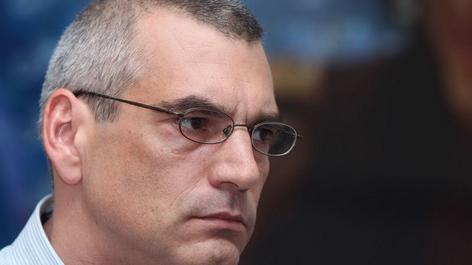
In Moscow`s shadow, Yerevan probes for renewed EU ties

At a meeting in Luxembourg on 12 October, the Council of the European Union (EU) officially authorized the European Commission and the High Representative to open negotiations on a new, “legally binding and overarching agreement” with Armenia. The decision promises to counter the emergence of a new division in the region between EU-aspiring Georgia and Eurasian Economic Union member Armenia.
Russian pressure had forced the Armenian leadership to abandon the signing of the Association Agreement and the related Deep and Comprehensive Free Trade Agreement (DCFTA) with the European Union in September 2013. Thus, the EU decision offers a rare second chance to President Serzh Sargsyan to realign Armenia’s international standing. So far, the government has been keen to keep its strategic options open with the EU.
Costly Alliance
The EU is Armenia’s largest trade partner by volume, its largest aid donor per capita and its largest investor. In this sense, the country’s membership in the EEU artificially corrects its natural trade pattern.
Trade with the EEU is costly. Armenian exporters will face higher transport costs since there is neither a direct land connection nor a functioning railway connecting Armenia to the EEU. Another barrier is the downturn of the Russian economy, which was buoyed by the earlier period of high oil prices.
By contrast, Armenia could reap significant benefits from preferential trade with the EU. As an EEU member however, Armenia may have to impose higher trade tariffs and brace for painful price-hikes for key commodities and basic produce. Yerevan might also have to renegotiate the terms of its membership in the World Trade Organization (WTO) in order to accommodate the changes to the country’s trade tariff structure.
Armenia`s only real hope is to leverage a new opening with the EU to counter the negative effects of an artificial correction to its natural trade, while containing the contagion from the downturn of the Russian economy.
Neighborhood complications
Ending up in a different political and economic alliance with Georgia holds both economic and political risks for Yerevan.
Georgians are keen to travel without visas to Schengen zone of countries. Tbilisi has been working on a Visa Liberalization Action Plan (VLAP) with Brussels and has started to implement DCFTA. This means the country would gradually introduce an integrated border management and migration regime. These changes would be first applied to the Georgian-Turkish border, since it is a part of a route taken by irregular migrants who seek transit further west, including to the EU.
A new integrated border management facility covering the Georgian-Turkish border will directly impact Armenian-Turkish trade, which now passes through Georgia. Since the relations between Armenia and Turkey are strained, this trade, estimated at more than $210 million annually, relies on a complicated arrangement with Georgia.
Turkish exports to Armenia require a double set of documents. An original bill of lading – a document necessary for transit of cargo – identifies Georgia as the point of destination for goods coming from Turkey. Once in Georgia, Turkish exporters are provided with a new document from the Georgian side, listing goods destined for Armenia. This method tends to inflate Georgian-Turkish (and Georgian-Armenian) trade statistics, but it is an important mechanism through which Georgia facilitates trade between Turkey and Armenia.
This arrangement will no longer be accepted as a legal alternative for Turkey and Armenia once the integrated border management system is in place.
Political risks
Yerevan’s 2013 about-face turn in favor of the EEU was obviously triggered by political and security considerations, rather than economic rationale. Armenia relies on Russia for external security as it faces off with its petrol-rich neighbor, Azerbaijan in a protracted conflict over Nagorno-Karabakh, which has been simmering since the mid-1990s.
But inherently asymmetric relations with Moscow have traditionally induced Armenian leaders to seek balance and mitigate their dependency on Russia. Courting European partners has been relatively risk-free in terms of a continued partnership with Russia. But Russia’s conflict with the EU over Ukraine significantly reduced Yerevan’s maneuvering space.
The new offer of a European engagement offers Armenia a breath of fresh air. Russia’s omnipresence has been recently aggravating the Armenian population. The murder of an Armenian family by a rogue Russian conscript from the Russian military base this January set public opinion on edge. More recently, Armenians were irritated with Russia’s weak response to an escalation of Azerbaijani attacks against Nagorno-Karabakh and Armenia.
But while Yerevan would welcome the rebuilding of Armenia-EU relations, there is a concern over a possible Russian reaction and the means of coercion that Moscow might use against Armenia. Russia’s Aggression in Ukraine and the military intervention in Syria showed that the Kremlin is willing to use hard power. Russia has been courting Azerbaijani president, Ilham Aliev and is now the leading arms provider to Azerbaijan, as well as to Armenia. This triggers fears that Moscow might weaken its security commitment to Armenia.
As Armenia starts to prudently probe the renewal of European ties, Georgia should be ready for a possible Russian reaction aimed at thwarting Armenia’s desires. Armenia’s membership in the EEU offers Russia effective means to interfere with Armenian trade between both Georgia and Iran.
Richard Giragosian directs the Regional Studies Centre (RSC) in Yerevan, Armenia. He is a regular contributor to major news and analytical networks.